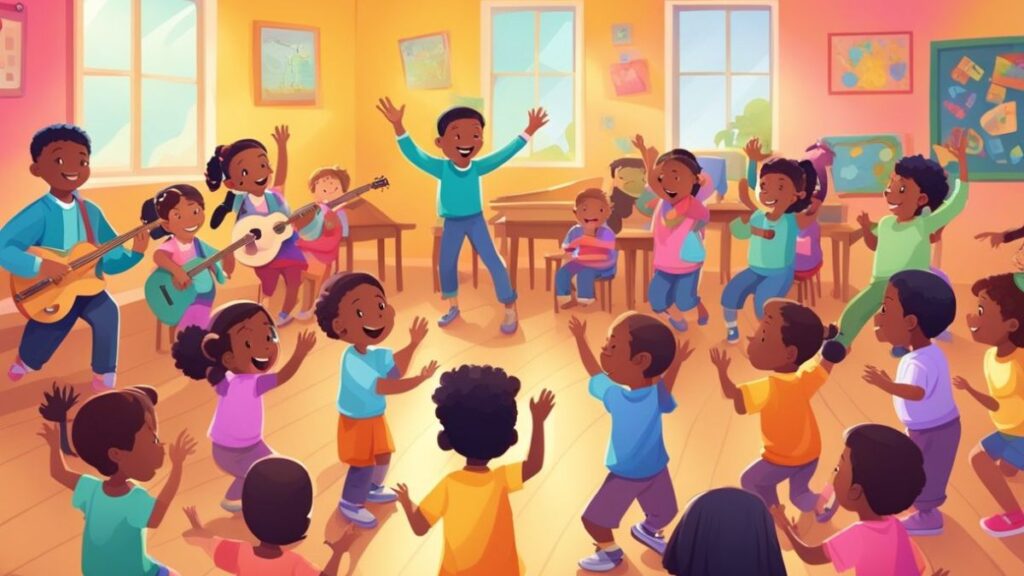Music is far more than a creative pursuit; it is a powerful educational catalyst that can positively influence how students learn and interact. Integrating music into the school environment extends beyond nurturing artistic talent—it has measurable benefits on the mind, body, and classroom culture. Modern classrooms, equipped with advanced teaching methods, increasingly recognize the value of integrating music for artistic growth and holistic academic development. By providing music education resources, schools empower students to enhance their cognitive skills, regulate emotions, and engage socially, benefits reach into nearly every aspect of student life. As technology and pedagogical research advance, schools are broadening their approach to harness music’s ability to foster creativity, increase student engagement, and help all learners meet their fullest potential.
Research has demonstrated that exposure to music in school environments can dramatically affect attention, memory, and even academic achievement. The benefits of music education are well-supported by neuroscience and educational research, reinforcing that musical activities help strengthen vital connections in the brain. As educators seek to cultivate well-rounded students prepared for future success, the intentional inclusion of music emerges as a foundational strategy. Recognizing the ripple effect of music on learning habits, strategies for providing music education resources are more critical than ever in the drive to nurture well-rounded, successful learners. Schools that invest in music do not just support future musicians—they lay the groundwork for every student’s cognitive, social, and emotional growth.
Cognitive Benefits of Music Education
Music activates multiple brain regions responsible for reasoning, language, and memory. When children engage with music—whether by learning an instrument, composing, or singing—they do far more than perform an art; they exercise and develop their brains in unique ways. Research highlights that students involved in music tend to have advanced neural processing, which translates into better listening skills, language development, and sharper attention spans. According to Edutopia, these students tend to exhibit notable improvements in traditional classroom subjects, and making music strengthens pathways associated with memory, attention, and spatial reasoning.
Studies carried out by leading educational psychologists suggest that rhythmic training, for example, can enhance reading and language skills, since interpreting music notes and patterns is closely related to language processing in the brain. This connection explains why musically trained children outperform their non-musical peers in reading tests and verbal memory tasks. Structured musical activities also improve mathematical reasoning, as learning rhythm, beats, and musical fractions can help make abstract mathematical concepts more concrete and accessible. Progressing through music-related milestones has also boosted problem-solving aptitude in collaborative and independent learning scenarios, helping students think outside the box and approach challenges from diverse perspectives.
Emotional and Social Impact of Music in Schools
Music offers an emotional outlet that is especially important for students of all ages. It is a universal language through which students can express feelings they sometimes struggle to articulate with words. School music programs can lower anxiety, build resilience, and provide students with practical tools for emotional regulation. Such benefits are particularly significant during stress, transition, or adolescence. Beyond individual well-being, shared musical experiences—such as band, choir, or group performance—create strong bonds and cultivate empathy among peers. Through collaborative projects, students develop vital communication and cooperation skills for navigating academic and real-world environments. These shared experiences help unite students from diverse backgrounds, fostering a culture of inclusion and mutual respect within the school community.
Reducing Stress and Increasing Engagement
Participation in school music activities can significantly lower perceived stress levels while boosting class engagement. Actively making music, whether singing or playing instruments, helps students channel their energy healthily, allowing them to return to academic tasks with greater focus. Students are given opportunities to express themselves, explore their identities, and feel a sense of belonging—factors that positively contribute to overall school culture and academic motivation. The American Psychological Association highlights the direct emotional benefits students gain through music, emphasizing its role in promoting well-being within school communities. When students feel connected and less stressed, they are more likely to attend school, participate enthusiastically, and achieve academically.
Music and Academic Performance
The intersection between music education and academic performance continues to attract scholarly attention. Numerous longitudinal studies have established a strong connection between sustained participation in music and achievement in core academic areas such as mathematics, reading, and science. This association stems from how music exercises a range of mental faculties, from memory to logical reasoning. Students who study music consistently outperform their peers in standardized testing and demonstrate greater perseverance in their academic journey, often developing advanced study habits, concentration, and self-discipline.
Musical engagement hones executive function skills critical for organizing thoughts, setting goals, and managing time. Since music requires discipline and repeated practice, it instills work habits transferable to all forms of learning. Learning to read music, memorize compositions, or prepare for a performance activates the same cognitive processes needed for success in academic subjects. Through developing these habits, students often become more attentive, disciplined, and highly motivated learners. These abilities give young learners an edge academically and in future workplace environments that demand collaboration, adaptability, and creative thinking.
Implementing Music Education in Schools
The process of making music accessible to all students involves several key strategies. One essential approach is integrating music into the broader curriculum, allowing students to see connections between musical concepts and core subject matter. Schools can benefit from creating interdisciplinary lessons that merge music with science, history, or language arts, making learning experiences more engaging and relevant. Providing diverse instruments and musical experiences helps cater to different interests and abilities, ensuring every student has an entry point into music education. Educational leaders must also prioritize regular professional development focused on creative instructional techniques for teaching music, enabling teachers to inspire students and foster appreciation for musical diversity.
- Integrate music with other classroom subjects to create meaningful interdisciplinary experiences that clarify complex ideas for students.
- Ensure equitable access to instruments, resources, and technology so that socioeconomic background does not limit participation.
- Encourage involvement in ensembles, bands, and school choirs for social growth, improved musicianship, and self-confidence.
- Support teachers through continuous training focused on innovative music pedagogy, so they remain inspired and effective instructors.
Challenges and Solutions in Music Education
Despite clear advantages, music education programs are often among the first cut during budget tightening. Limited funding, schedule constraints, and the perceived need to focus on “core” academic subjects can marginalize music in schools. These challenges are compounded by a lack of understanding about music’s broader benefits, from boosting academic achievement to enhancing emotional health and school spirit. Strong advocacy is needed from teachers, administrators, and communities to address these barriers. Schools can form partnerships with local music organizations, pursue public and private grants, and highlight the proven, multifaceted benefits that music offers to reinforce the value of music education. By presenting evidence-based arguments, educators can secure vital support from all stakeholders and ensure music education remains integral.
Community involvement and creative funding initiatives, such as benefit concerts or local business sponsorships, can provide sustainable solutions to ensure the vitality of school music programs for future generations. Parents and alumni can also advocate for sustained support and foster public enthusiasm for music in education.
Conclusion
Music is a cornerstone in developing essential learning habits, emotional well-being, and social proficiency within schools. Educators equip students to thrive across all facets of their academic and personal lives through dedicated efforts to integrate and sustain robust music education initiatives. The dynamic benefits of music in schools underscore its status not just as an art but as a fundamental educational resource shaping the leaders of tomorrow. Supporting music education means investing in the comprehensive development of every child, ensuring future generations experience the proven, lifelong benefits music brings to individual learners and their communities.







